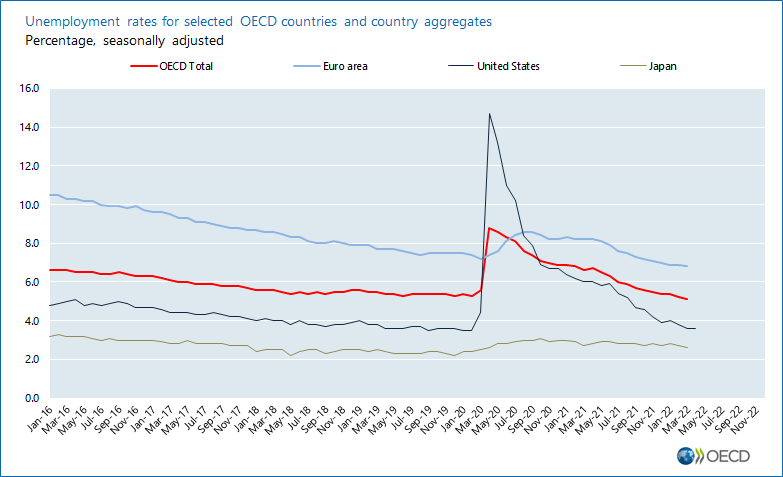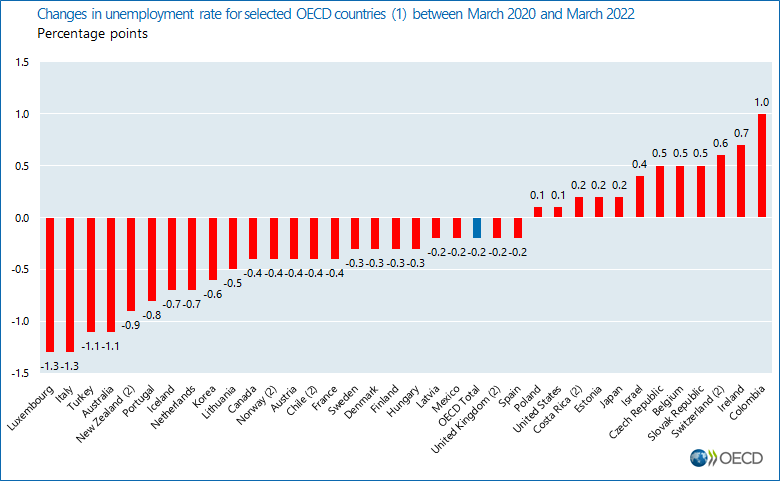11 May 2022 – The unemployment rate in the OECD fell further to 5.1% in March 2022, from 5.2% in February. This represents a continuation of a positive trend for the OECD and the 11th consecutive month of falling or stable unemployment, keeping it below the pre-pandemic rate of 5.3% recorded in February 2020 (Figure 1).
Indeed, the unemployment rate was below the pre-pandemic rate in two-thirds of OECD countries in March, compared with just half of them in February (Figure 2). Moreover, the number of unemployed workers in the OECD continued to fall, reaching 34.6 million, 0.9 million below the pre-pandemic level.
The March decline in the OECD unemployment rate was recorded for both women and men (Table 2), as well as for all age groups (Table 3).
In the euro area, the unemployment rate decreased further to 6.8% in March from 6.9% in February, with the largest declines recorded in Austria, Italy and Latvia. By contrast, the largest increase was observed in Ireland and slight increases were also recorded in Greece, Portugal and Spain (Table 1).
Outside the euro area, the unemployment rate fell markedly in Mexico, and more modestly in Canada, the Czech Republic, Iceland, Israel, Japan and the United States. However, unemployment increased in Turkey and more slightly in Colombia and Denmark. More recent data show that in April 2022 the unemployment rate stabilised at 3.6% in the United States while it slightly decreased in Canada (to 5.2%, its lowest level since comparable data became available in 1976).
It should be noted that the unemployment rate does not capture non-employed people who are outside of the labour force, either because they are not actively looking for a job or are not available for work.

Breaks between December 2020 and January 2021 for some EU Member States resulting from . These breaks can affect, to some extent, aggregates for the euro area and OECD Total.
The fall in the OECD area unemployment rate when compared with the April 2020 peak should be interpreted with caution, as it largely reflects the return of temporary laid-off workers in the United States and Canada, where they are recorded as unemployed, unlike in most other countries, including European member states, where they are recorded as employed.
– Source: Labour Force Statistics

1) Germany, Greece and Slovenia, which experienced a methodological break between December 2020 and January 2021 in their unemployment series, were excluded from the chart.
2) For Costa Rica, Chile and Norway change between February 2020 and February 2022; for the United Kingdom, change between February 2020 and January 2022; for New Zealand, change between fourth quarter 2019 and first quarter 2022; Switzerland, change between fourth quarter 2019 and fourth quarter 2021.






